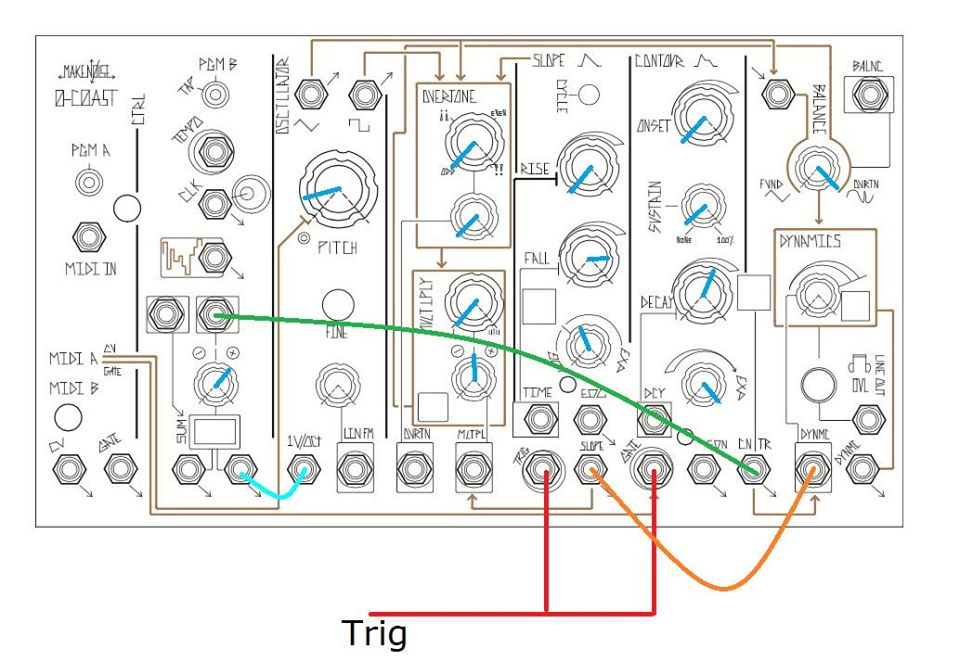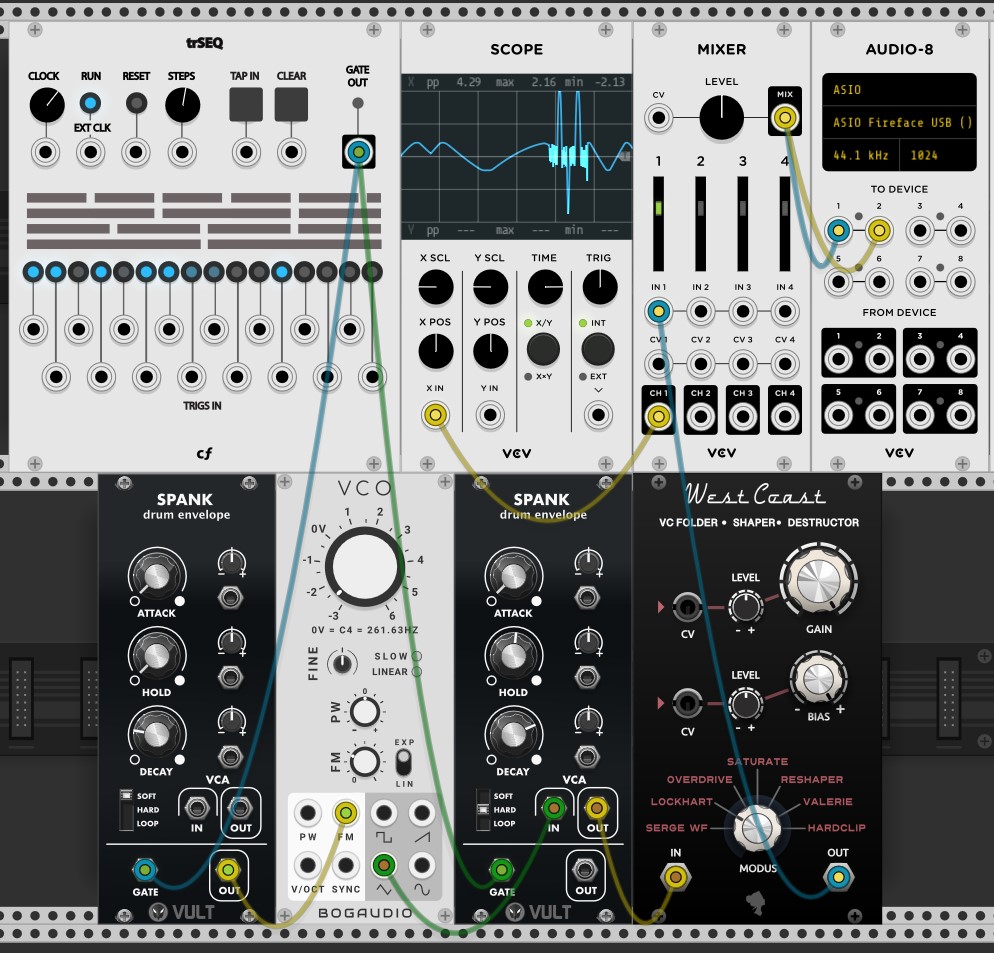Forget even all the music that was made with it for a second. How the sound of a TR-909 kick was made can open new doors.
TR-909 photo at top: (CC-BY-NC) sanomeier.
Let’s start with Owen Vallis of Kadenze, who explained intensive research into the TR-909 back in spring of 2016. It’s ostensibly a tutorial in REAKTOR Core – and with an audience of people entirely new to that visual development environment, it’s very good at that. Owen can make DSP concepts really accessible.
But more than that, Owen gets really clearly into what makes the TR-909, well, kick. It’s fun to watch for 909 fans, and it’s explained in such a way that you could port his work from REAKTOR into any synthesis environment, really.
And that’s what our friend Marc Resibois did, exactly. ” I realized the 909 ‘shape’ (i.e. a triangle -> shaper) is pretty much the ‘complex’ shape with overtone set to zero,” he explained earlier this week on the 0-Coast forum. “So I decided to try to make a decent kick out of the 0-coast and ended up with a really nice patch. I’ve added a picture here, use the mini-math pot for tone, slope fall for the length and raise overtone slowly for distortion madness.”
Here’s the patch sheet (click for larger version):

I don’t have the Make Noise device in front of me so I’m going by the pictures and my lord, Make Noise, you didn’t make these labels easy to read exactly! But yeah, you nicely get your waveshaping out of the overtone control. It illustrates how balanced the 0-Coast is in capabilities that it easily provides your pitch envelope, percussive dynamic shaping for the drum sound, and distortion. It’s ready to be all kind of drums.
Hardware fans I’m sure could map this to other stuff, too.
And here’s what it sounds like:
Marc-Nostromo-Etudes · 0-Cicks
Thanos Fotiadis chimes in, ‘”I wanted to add that for harder styles or more experimental kicks, I send the Square or Triangle outputs straight into the LIN FM input with the knob at 12 o’clock. Also sending a random stepped CV to Overtone can add some variation on the noise following the kick. And of course the Multiply knob can bring CHAOS.”

I set about to do something similar in VCV Rack and I promise I will but… I got distracted, because it’s also plenty of fun just generally playing with triangle waves and wave shaping / distortion. Add some kind of pitch and amplitude envelopes, and you get some brutal sounds – whether or not they sound like the TR-909 (or even a kick drum) ceasing to matter eventually.
The two key ingredients here are:
SPANK from Vult is a snappy drum-style envelope (handy for both pitch and amplitude – and you might check out Vult’s low pass gates, too, while you’re at it). It’s worth paying for Vult’s stuff, but you can try SPANK as a free version, too.
Lindeburg’s stuff is also wonderful, and here the West Coast Complex Shaper gives you all the forms of distortion and waveshaping you could possibly want. (It’s not a bad idea to keep the scope around to watch what’s happening!)
The advantage of deconstructing the 909 in this way is, you’re free to bend the sound in ways Roland didn’t – and to get out of the cliches of the music already made with it.
Even more modeling
Michael Heuer, inspired by the snare piece, wrote in with synthesized snares and kicks in ChucK, the free (very elegant) code-based language for sound synthesis:
Kick.
https://github.com/heuermh/lick/tree/master/lick/kick
Snare.
https://github.com/heuermh/lick/tree/master/lick/snare
You’ll notice so far we’ve had all kicks and snares. What about modeling hats?
Then you need this article, by Kurt JamesWerner, Jonathan S. Abel, and Julius O. Smith from Stanford’s legendary CCRMA:
The TR-808 Cymbal: a Physically-Informed, Circuit-Bendable, Digital Model
There’s a downloadable PDF.
And there’s an 808 kick to go with your 909 kick.
A Physically-Informed, Circuit-Bendable, Digital Model of the Roland TR-808 Bass Drum Circuit
And there’s a cowbell, too.
More Cowbell: a Physically-Informed, Circuit-Bendable, Digital Model of the TR-808 Cowbell
That should keep us busy.
Even more 0-CTRL
By the way, bonus for 0-CTRL owners – they’ve been doing great tutorials over at Make Noise, like this one on expression:
Got more for us? Keep going.
How we wound up here: